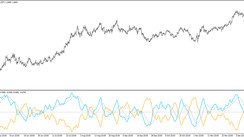Introduction to Stop-Loss Orders: An Essential Pillar of Risk Management
In the fast-paced and often unpredictable world of trading, having a precise and well-thought-out exit strategy can mean the difference between significant gains and substantial losses. At the heart of this strategy lies the indispensable tool called the stop-loss order. It acts almost like a vigilant sentinel, automatically triggering a sale once a certain predetermined price threshold is breached, thus potentially saving you from steep declines.
To truly comprehend the indispensable role it plays, it is critical to delve deep into the various aspects that encompass this tool, including its conceptual foundations, functionalities, and the strategic foresights required in its application.
Illustrating the Concept with a Real-World Scenario
To grasp the vital role of a stop-loss order, imagine securing a stock at a $20 valuation. Parallelly, a stop-loss order is designated at $19.50, acting as a protective shield against significant downswings. This means that your asset is sold automatically, the moment it experiences a dip to $19.50, preserving your capital from further depletion. In a favorable scenario where the stock value remains buoyant above $19.50, the stop-loss remains dormant, allowing your investment the space to flourish and potentially accrue more value.
Key Takeaways and Considerations
- Proactive Mitigation of Losses: Utilizing stop-loss orders allows you to temper potential downfalls actively. This predefined exit strategy works autonomously, mitigating losses by facilitating an automatic sale once the defined price level is met.
- Mindful and Strategic Planning: Developing the ideal stop-loss threshold isn't a casual endeavor; it entails a comprehensive approach grounded in strategic analysis, bolstered by a firm understanding of market dynamics, and fine-tuned through relentless trial and error of diverse techniques.
Market and Limit Orders: The Foundations of Your Trading Strategy
As you navigate the intricate pathways of the trading landscape, gaining a deep understanding of market and limit orders becomes fundamentally essential. These elements are crucial in constructing a resilient strategy, capable of not only weathering market fluctuations but thriving amidst them.
Market Orders: Navigating Through Dynamics and Nuances
A market order assumes a proactive role, ready to facilitate your stop-loss order at the prevailing market price the moment it surpasses the $19.50 benchmark. This strategy can serve as a bulwark against further depreciation, shielding you from more substantial setbacks. However, it is not devoid of pitfalls; there exists a phenomenon called “slippage,” a scenario where rapid market movements can result in a less favorable execution price. While this risk looms, trading in environments with substantial volume generally reduces this concern, offering a semblance of reliability and reassurance.
Limit Orders: A Detailed Examination
For traders seeking an enhanced degree of control, the stop-loss limit order stands tall as a robust option. This strategy promises to finalize the transaction at the specified stop-loss rate or a more favorable one, thereby offering a resolute defense against slippage. However, this firm stance can sometimes be a double-edged sword, as rapid unfavorable market movements might lead to non-execution, potentially stranding you in a deteriorating position.
Strategic Stop-Loss Placement: Perfecting the Art in Buying and Short Selling Scenarios
Setting up your stop-loss orders at the optimum positions goes beyond mere strategy; it embodies an art that demands both understanding and experience. Distinct approaches are required for buying and short-selling situations, with each bearing its unique set of considerations.
Placement During Buying: An In-depth Analysis
When you find yourself in the buyer’s shoes, strategically situating your stop-loss order slightly below a notable "swing low" could potentially be a game-changer. This point is identified as a dip in the price before it rallies again, showcasing strong support at that level. Here, aligning with the trend is beneficial, opting for scenarios exhibiting an upward trajectory of swing lows, thus signaling a positive trend momentum.
During Short Selling: Unveiling the Strategy
In contrast, during short-selling, the wise practice is to position your stop-loss just above a "swing high," acting as a resistance barrier against an upward price movement. Adopting this strategy aligns you with a descending trend of swing highs, aiding you in avoiding the potential traps that could occur in adverse market conditions.
Exploring Beyond Conventional Wisdom: Uncovering Alternative Stop-Loss Points and Techniques
While traditional methodologies hold their ground, the trading arena is replete with innovative and alternative paths that can potentially guide you towards better outcomes. Delving into these untrodden paths, you will find a rich reservoir of tactics and strategies, each presenting a fresh perspective and a new horizon of opportunities.
Harnessing Technical Indicators for Astute Decisions
A deeper exploration into the realm of technical indicators can reveal allies powerful enough to guide your stop-loss placements effectively. For instance, employing tools such as Fibonacci Retracement levels can add an analytical depth to your strategy, fostering a landscape ripe with profitable opportunities. Such indicators offer a data-backed pathway, helping you establish stop-loss points that align with the market’s underlying dynamics.
Embracing Volatility with Tactical Approaches
The trading space offers traders a slew of volatility analysis instruments like the renowned Average True Range indicator. This tool enables you to measure normal price fluctuations, allowing for intelligent stop-loss order placements. Mastering the art of leveraging these tools can potentially shield you from customary market unrest while capitalizing on significant price movements.
The Journey to Mastery: Crafting a Personalized and Dynamic Stop-Loss Strategy
Embracing a stop-loss strategy is a journey that goes far beyond merely making informed choices. It's about building a nuanced understanding through relentless learning and hands-on experiences. Creating a detailed trading blueprint with clear entry and exit strategies can foster a controlled yet flexible trading environment, steering you towards success.
Answering Frequently Asked Questions for a Holistic Understanding
-
What are Trailing Stop-Loss Orders?
Trailing stop-loss orders offer a dynamic adjustment, evolving with the security's price movements to enhance your gains progressively. This tool embodies a perfect harmony of flexibility and security, offering a conducive environment for controlled trading.
-
How to Effectively Set a Stop-Loss Order?
Setting a stop-loss order usually follows a straightforward process, starting with choosing the "buy" or "sell" option, followed by selecting the "stop" option, and finally determining the desired stop price. While slight variations might occur across different trading platforms, the core essence remains intact, guiding you towards a strategy grounded in foresight and sound judgment.





